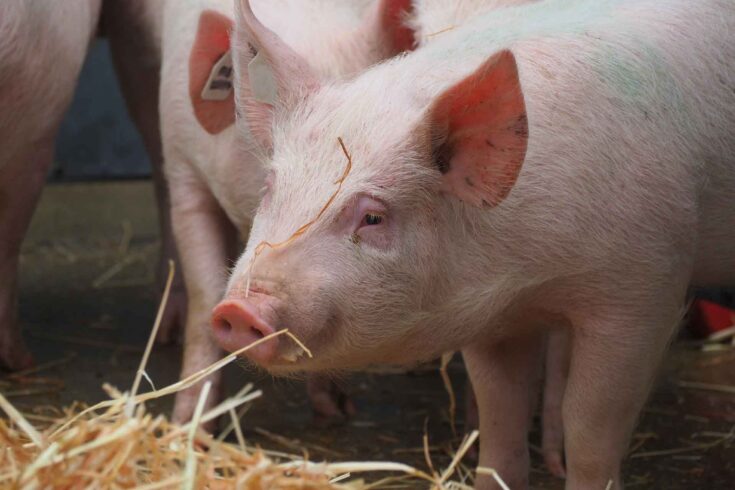Studies have shown that Oxford’s new potential vaccine against COVID-19, named RBD-SpyVLP, produces a strong antibody response in mice and pigs.
The studies, which provide vital information for the further development of the vaccine, were carried out by:
- the Pirbright Institute, funded by the Biotechnology and Biological Sciences Research Council (BBSRC)
- the University of Oxford.
This type of vaccine is not a competitor for the first wave of vaccines. It is hoped that it will be useful as a standalone vaccine or as a booster for individuals primed with a different COVID-19 vaccine.
Protective neutralising antibodies
The Oxford-produced RBD-SpyVLP vaccine candidate contains part of the SARS-CoV-2 spike protein called the receptor binding domain (RBD). RBD is a range of protective neutralising antibodies that can bind to in a way that blocks infection.
The RBD is attached to a virus-like particle (VLP) that contains no genetic material using Oxford’s SpyTag or SpyCatcher technology, a kind of protein ‘superglue’.
This was shown to generate a greater antibody response in mice than administering the RBD alone.
Pirbright researchers tested the RBD-SpyVLP vaccine in pigs as a large animal model to establish if different dosages would affect the immune response.
A strong antibody response
The research, published in Nature Communications, demonstrated that RBD-SpyVLP produces a strong neutralising antibody response.
The study also examined samples taken from the nose and mouth of vaccinated pigs and found SARS-CoV-2 specific antibodies were present.
This is a promising finding since antibodies at the site of entry for SARS-CoV-2 could be important for providing robust protection.
Interestingly, no difference was found in the magnitude of antibody response when comparing vaccine dose levels.
This suggests that the smaller dose tested, which is the same as intended for human administration, may provide equal protection to larger doses or that even lower doses of the vaccine could be effective.
Two doses
Pirbright’s pig model has previously been used to test Oxford’s ChAdOx1 nCoV-19 (AZD1222) vaccine, which demonstrated that two doses produced a stronger immune response in pigs than one.
Pigs have similar immune, respiratory and physiological characteristics to humans, and can therefore provide vital knowledge about the response to candidate vaccines that can inform human clinical trials.
This model has been shown to predict vaccine outcome in humans, particularly in influenza studies.
Vaccine stability
The researchers also tested the stability of the vaccine and found that RBD-SpyVLP:
- is highly resilient
- is stable at room temperature
- can be freeze dried without losing its power to immunise.
These properties would reduce dependence on cold chains for transport and storage and facilitate global distribution.
Professor Simon Graham, who led the pig studies at Pirbright, said:
These results offer valuable insights into the kind of immune responses that the RBD-SpyVLP vaccine could trigger in humans.
Further understanding the dose required to elicit a strong immune response is key for the progression of vaccine development and scaling up for manufacture.
A large collaborative effort
Professor Graham Ogg, Interim Director of the Medical Research Council Human Immunology Unit (MRC HIU), remarked:
I am delighted about the promising progress of the novel vaccine study, which is a result of a large collaborative effort including Professor Alain Townsend’s team at the MRC HIU, MRC Weatherall Institute of Molecular Medicine, Radcliffe Department of Medicine, University of Oxford and The Pirbright Institute.
The findings provide the foundations to progress towards further exciting developments.
Further information
The Pirbright Institute research was funded by:
- BBSRC UK Research and Innovation (UKRI) Institute Strategic Programme Grants
- UKRI Engineering and Physical Sciences Research Council
- UK Department for Environment Food and Rural Affairs.
Research was also funded by:
- Townsend-Jeantet Charitable Trust
- EPA Cephalosporin Early Career Researcher Fund
- Chinese Academy of Medical Sciences
- Innovation Fund for Medical Science
- Cancer Research UK
- UKRI MRC
- Wellcome Trust (FC001030).

